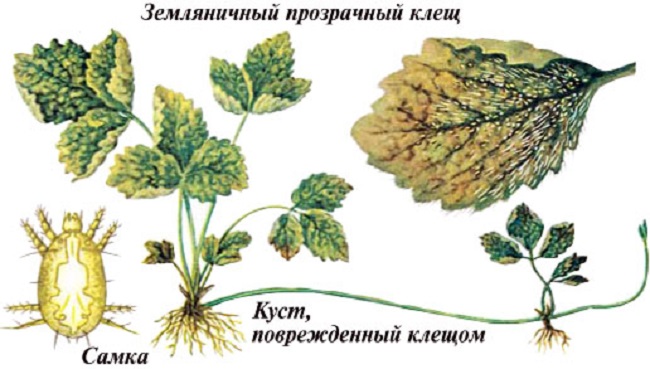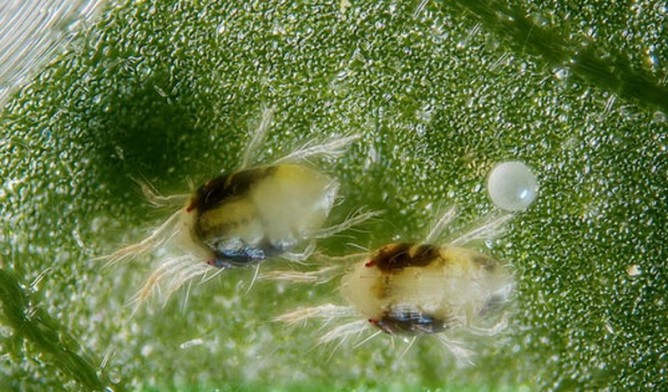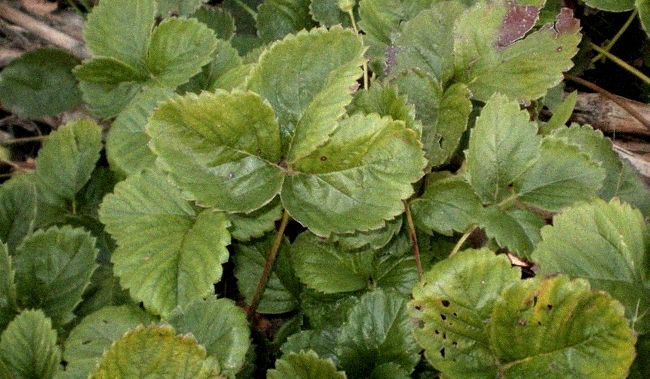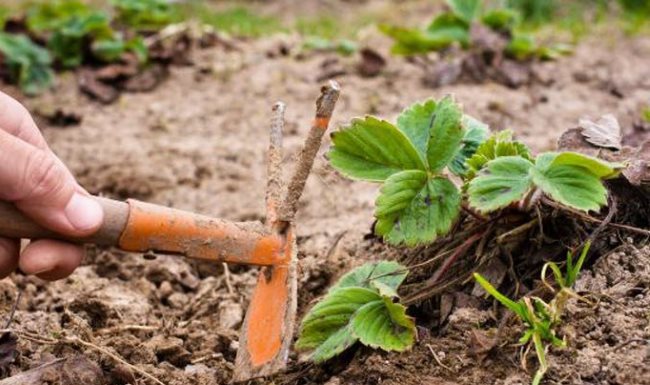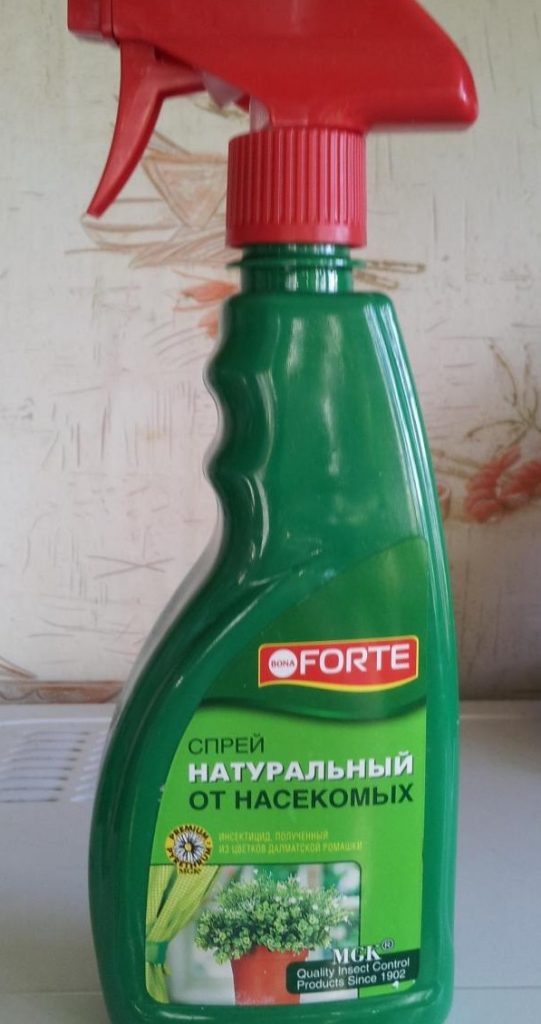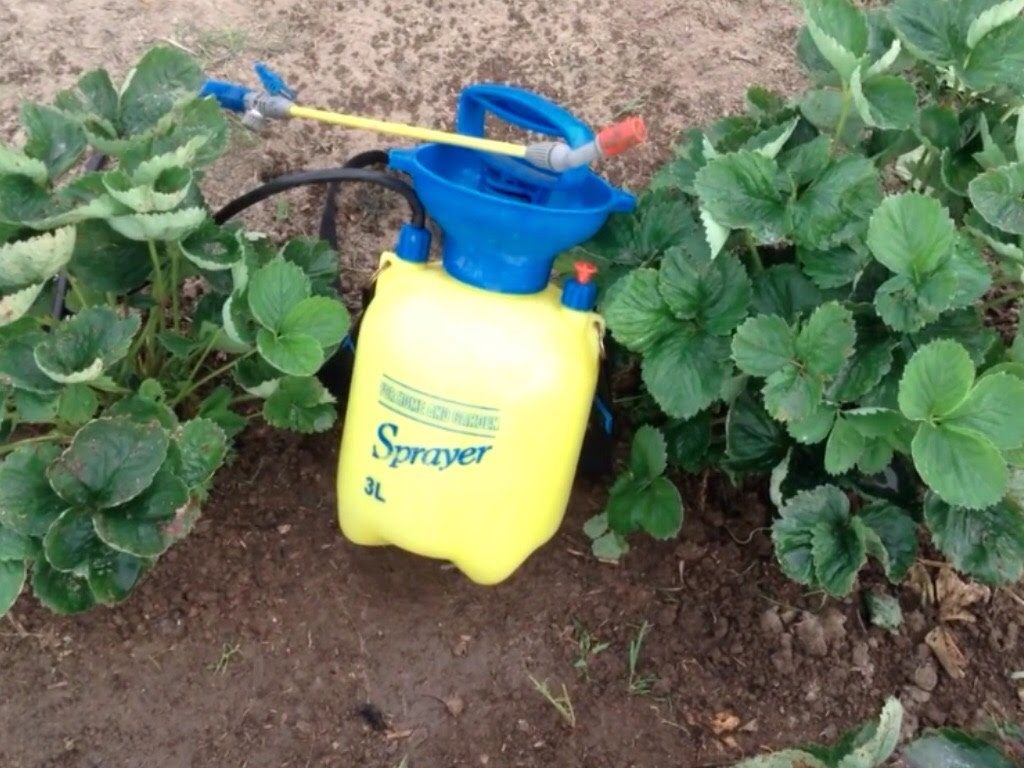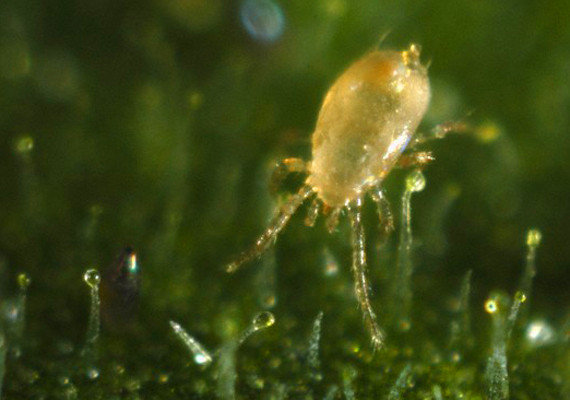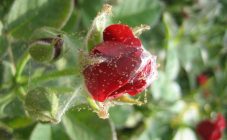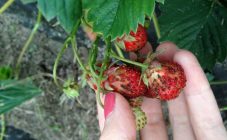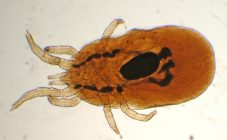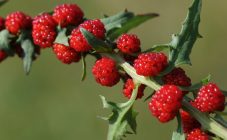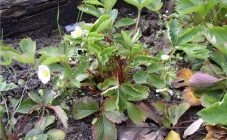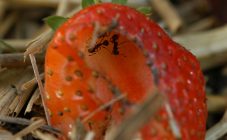Content:
If the leaves of the garden strawberry began to curl, then perhaps this is a consequence of the fact that the strawberry mite has settled on the strawberry plantation.
What is a strawberry mite
The name strawberry or strawberry mite refers to three types of arthropods:
- transparent;
- cyclamen;
- usual spider web.
A transparent mite loves moist soil, a common spider mite, on the contrary, lives in dry, sunny areas. Cyclamen loves warm, moist soil, therefore, it most often affects greenhouse plantings.
All species feed on plant sap, which causes great harm to its development. They parasitize on the leaf surface. Not only strawberry, but also a raspberry bush, as well as flowers, can suffer from a tick.
Insects have a translucent body with a hard cover. Transparent and common spider mites have specks on their bodies, while cyclamen ones do not. Females grow up to 230 microns, and males - up to 145 microns. The length of the pest is about twice the width.
The larvae have several stages of development. At the first stage, they actively move along the leaf and feed on the sap of the plant, at the second, they are immobile and do not eat anything. In the second stage, they are not affected by contact-intestinal chemical preparations.
Due to the fact that the size of the tick is small, it is almost impossible to notice it with the naked eye. Lives practically throughout Europe and North America.
When spring comes and the temperature rises to + 15 ° C, it is time for ticks to activate in the garden. At this time, females begin to lay eggs. During the season, from 4 to 5 generations of the insect grows. The insect population reaches its maximum number at the end of summer. At the beginning of autumn, the number of ticks decreases.
The favorable temperature for the life of the tick is + 25 ° C.
Transparent and common spider mites crawl from one plant to another, affecting the plantation, and cyclamen is more passive and is carried by the wind along with fallen leaves. A pest can also appear if a person brought it on clothes or shoes from an infected area, or when working with infected garden tools.
Tick damage
Strawberry bushes affected by insects are inhibited in development and, as a result, the quantity and quality of the harvest decreases. In addition, it infects flower buds, which leads to a loss of yield in the next season. The most susceptible to attack are adult bushes (from 3 years old).
In addition, affected plants winter worse, and the plantation may freeze out.
How to tell if a strawberry mite has attacked a strawberry?
The signs of a diseased plant are as follows:
- leaves twisted into a tube;
- when you try to unfold the sheet, it curls again;
- cobweb on strawberries on the back of the leaves;
- yellowing of foliage ahead of time;
- an unripe berry on a diseased bush is deformed and dries up;
- the appearance of a spotting of a bronze color on the leaves;
- the number of flowers decreases, and fruiting decreases.
Consider where the strawberry mite comes from on strawberries, how to deal with it and measures to prevent infection.
Strawberry mite protection
In order not to bring the pest to the plantation, you need to adhere to certain rules:
- First, you should only use healthy seedlings.
- Secondly, a place for planting young plants should be chosen in sunny, well-ventilated areas. It is undesirable to arrange beds in shady and humid places.
- Thirdly, the area occupied by strawberries must be free of weeds, therefore, weeding is periodically performed. Dried leaves are also removed from the site.
- Fourth, good care and feeding of plants will allow them to quickly gain strength and increase resistance to pests.
Also, one of the measures to prevent infection is compliance with crop rotation.
If you constantly carry out preventive measures, then how to deal with a spider mite on strawberries, you will not have to think.
However, if the infection did occur, then the plantation must be treated.
Spider mite control
So what to do if cobwebs appear on strawberries? If there are few infected bushes, then you need to remove from the garden all the plants that the pest could infect, and burn them.
To destroy the insect, the plantation is treated with folk remedies and chemicals.
Home remedies for ticks
Treatment of plants with infusions
To destroy the pest, you can treat the plants with an infusion of onion peels. To do this, 200 g of husk is poured with 10 liters of water and insisted for 5 days. Filter the infusion before processing. Spraying is carried out at the beginning of the growing season and twice after the harvest.
Garlic infusion can be used instead of onions. It is prepared in the same way as onion.
You can use a soapy solution to fight. For this, the laundry soap is dissolved in water. The correct concentration will be in the event that the fingers placed in the solution are soapy. Spray plant leaves with a spray bottle or garden sprayer. Unfortunately, such treatment will not harm the tick eggs, so it must be repeated after 5 days.
Hot water treatment
This is another popular way to fight insects. Tick females spend the winter between the folds of young leaves. Therefore, in early spring, you can water the bushes with garden strawberries with hot water. For this, the water is heated to 80 ° C. Watering is carried out from above on the leaves of strawberries.
After such treatment, not only ticks die, but also other pests.
Also, seedlings are treated with hot water. To do this, the acquired plants are lowered by their roots into a container with hot water at a temperature of about 45 ° C for 10-15 minutes. Then the bush is immediately lowered into a container with cold water and planted in the beds. Ticks usually cannot withstand this treatment.
For spraying, you can use a solution of ammonia or hydrogen peroxide. To do this, ammonia or peroxide is diluted in the proportion: 1 tbsp. alcohol per 10 liters of water. Leaves are processed on both sides 3 to 4 times. There should be an interval of 1 week between treatments. Work is carried out at an air temperature of at least 20 ° C.
Phytocontrol
Ticks cannot stand the smell of common tansy, catnip, narrow-leaved lavender, etc. Therefore, you can plant them along the plantation, and the tick colonies will noticeably decrease.
Also for the same purpose, garden or horticultural oil is used to fight, which can be purchased in specialized stores.
Chemical method
The strawberry mite is quite resistant to most chemicals used to combat insect pests.
The following insecticides have shown themselves well in killing ticks:
- Fufanon;
- Fitoverm;
- Actellic.
Treatment with drugs is performed in the fall 3 times with an interval of 10 days. The drug is diluted in accordance with the instructions.
Also in the spring you can use Arivo and Karate.
Spraying with chemicals cannot be performed when strawberries are blooming, otherwise it will lead to the death of a large number of beneficial insects.
You can use Karbofos to protect strawberries. In this case, the preparation is diluted in a proportion of 75 g of powder per 10 liters of water. Only leaves are processed, therefore, the seedlings are lowered into a container with a solution with their roots upwards so that the drug does not get on them.
Karbofos can be sprayed with strawberry plantings in autumn.
Colloidal sulfur will help cure highly infected plants. For this, 50-100 g of the drug is diluted in 10 liters of water and the plant is treated during the development of the leaves, before the blooming of the buds and during the ripening of the berries.
When spraying with chemicals, it is important to observe the following rules:
- handle in dry, calm weather;
- when working, observe safety rules: use a respirator, goggles and gloves;
- working hours - morning or evening;
- the air temperature must be at least + 18 ° С (unless otherwise indicated in the instructions);
- do not process during flowering;
- apply the drug on both sides of the sheet.
Biological agent
Strawberry mites have natural enemies - mites abliseius and phytoseiulus... When they are attached to an infected area, acariphages begin to destroy the pest, thereby helping to get rid of the pest. They kill up to 95% of parasites. After the food runs out, they also die.
These can be purchased at flower shops.
Mechanical method
After harvesting, the leaves are trimmed, which are removed from the site and burned. You can leave 3-4 leaves on the bush. The rest are removed with garden shears or pruning shears.
You can also plant a mite-resistant strawberry variety in your garden beds.
Suitable for this:
- Omsk early;
- Torpedo;
- Zenga-Zengana, etc.
Thus, timely implementation of preventive measures and pest control will allow you to get a large amount of sweet and healthy berries from the plantation.
